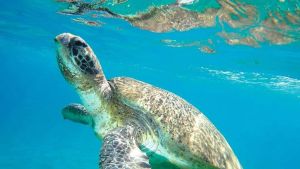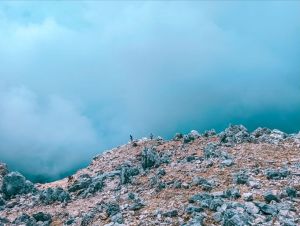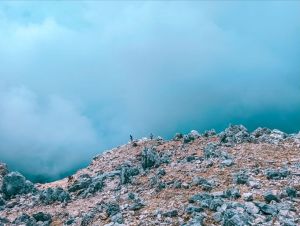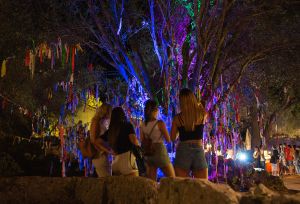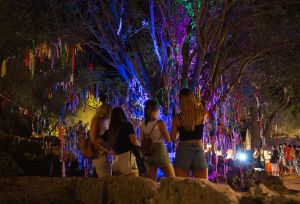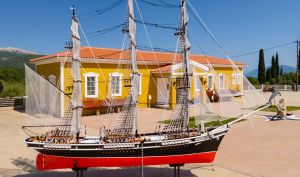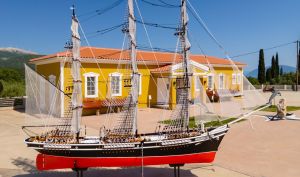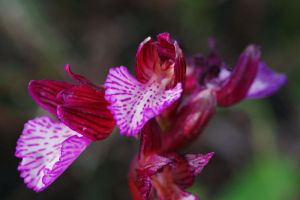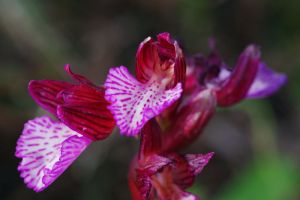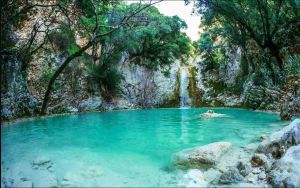Displaying items by tag: kefalonia living
CARETTA CARETTA, CON GRAZIA E LENTEZZA DALL'ANTICHITÀ FINO A NOI
Sono tra i più grandi rettili del mondo, abitano quasi tutti gli oceani e sono animali talmente antichi da aver condiviso il pianeta con i dinosauri oltre 210 milioni di anni fa. La tartaruga Caretta Caretta ("loggerhead" in inglese per la sua testa larga e muscolosa) è un simbolo del Mediterraneo ed in particolare della Grecia: le nostre coste ospitano il 60% dei nidi nel Mediterraneo e due dei siti di riproduzione più importanti per le specie, uno a Zante e l'altro nel Peloponneso occidentale.
THE TERRIBLE DRAGON OF MOUNT AINOS
In July 1633 a strange story, almost a fairy tale, was recorded in an official document of the municipal register of Kefalonia. The Venetian governor Fantino Malipiero declared that the inhabitants of the island were terrorized by a man- and sheep-eating dragon and issued an order to kill the terrible beast. As many had already failed in the difficult task, a reward was offered: anyone brave enough to slay the dragon would be rewarded with a large part of the forest at the foot of Mount Ainos.
IL TERRIBILE DRAGO DEL MONTE AINOS
Nel luglio del 1633 una strana storia, quasi una favola, fu registrata in un documento ufficiale dell'anagrafe comunale di Cefalonia. Il governatore veneziano Fantino Malipiero dichiarò che gli abitanti dell'isola erano terrorizzati da un drago mangiatore di uomini e pecore ed emise un ordine per uccidere la terribile bestia. Poiché molti avevano già fallito nella difficile impresa, fu offerta una ricompensa: chiunque fosse abbastanza coraggioso da uccidere il drago sarebbe stato ricompensato con gran parte della foresta ai piedi del Monte Ainos.
THE BREATH OF THE GIANT
A fearsome giant is buried under the blue waters of the Mediterranean Sea. His name is Enceladus, he has long dark hair and a thick beard, proud eyes and a rebellious spirit. According to the myth, Enceladus was at the head of the Titans who dared to challenge the gods of Olympus. What does it have to do with Kefalonia? Well, it seems that he is responsible for the earthquakes that occasionally shake the island.
IL RESPIRO DEL GIGANTE
Sotto le acque blu del Mar Mediterraneo è sepolto un temibile gigante. Il suo nome è Encelado, ha lunghi capelli scuri e una barba folta, occhi fieri e uno spirito ribelle. Secondo il mito, Encelado era a capo dei Titani che osarono sfidare gli dei dell’Olimpo. Cosa c'entra con Cefalonia? Beh, sembra sia proprio lui il responsabile dei terremoti che di tanto in tanto scuotono l’isola.
THE NAUTICAL MUSEUM OF SAMI
Imagine a child fascinated by the mysteries of the sea. Imagine him building a boat with wood and sacks of flour as a sail and, at the age of nine, setting sail for Ithaca. No, this is not the story of a small adventurer fished (fortunately) in the channel between Ithaca and Kefalonia by a fisherman, but of a great lover of the sea who, once he grew up, even decided to open a museum to bear witness to the great story boating of his native country, Sami.
IL MUSEO NAUTICO DI SAMI
Immaginate un bambino affascinato dai misteri del mare. Immaginatelo costruire una barca con del legno e dei sacchi di farina come vela e, a soli nove anni, salpare verso Itaca. No, questa non è la storia di un piccolo avventuriero ripescato (fortunatamente) nel canale tra Itaca e Cefalonia da un pescatore, ma di un grande appassionato del mare che, una volta cresciuto, ha deciso addirittura di aprire un museo per testimoniare la grandiosa storia nautica del suo paese natale, Sami.
KEFALONIA, A NATURAL PARADISE TO SAFEGUARD
Did you know that Kefalonia is a natural paradise not only for those who come on holiday but also for the many animal and plant species that populate it? In addition to us, noisy human beings, and the famous Caretta Caretta turtles, the island is home to many species with a more discreet presence such as monk seals, dolphins, wild horses, falcons and many, many colourful insects. A short walk in the greenery (or sometimes, just a snack on the beach) is enough to enter a fascinating microcosm that is always on the move!
CEFALONIA, UN PARADISO NATURALE DA TUTELARE
Sapevi che Cefalonia è un paradiso naturale non solo per chi viene in vacanza ma anche per le tantissime specie animali e vegetali che la popolano? Oltre a noi rumorosi esseri umani e alle famose tartarughe Caretta Caretta, l'isola ospita moltissime specie dalla presenza più discreta come foche monache, delfini, cavalli selvatici, falchi e tanti, tantissimi colorati insetti. Basta una breve passeggiata nel verde (o a volte, solo uno spuntino in spiaggia) per entrare in un microcosmo affascinante e sempre in movimento!
THE POTISTIS WATERFALLS
We have already told you on several occasions how varied and surprising the panorama of Kefalonia is due to its pristine beauty, but did you know that on the island there are also beautiful waterfalls hidden in a clearing?

